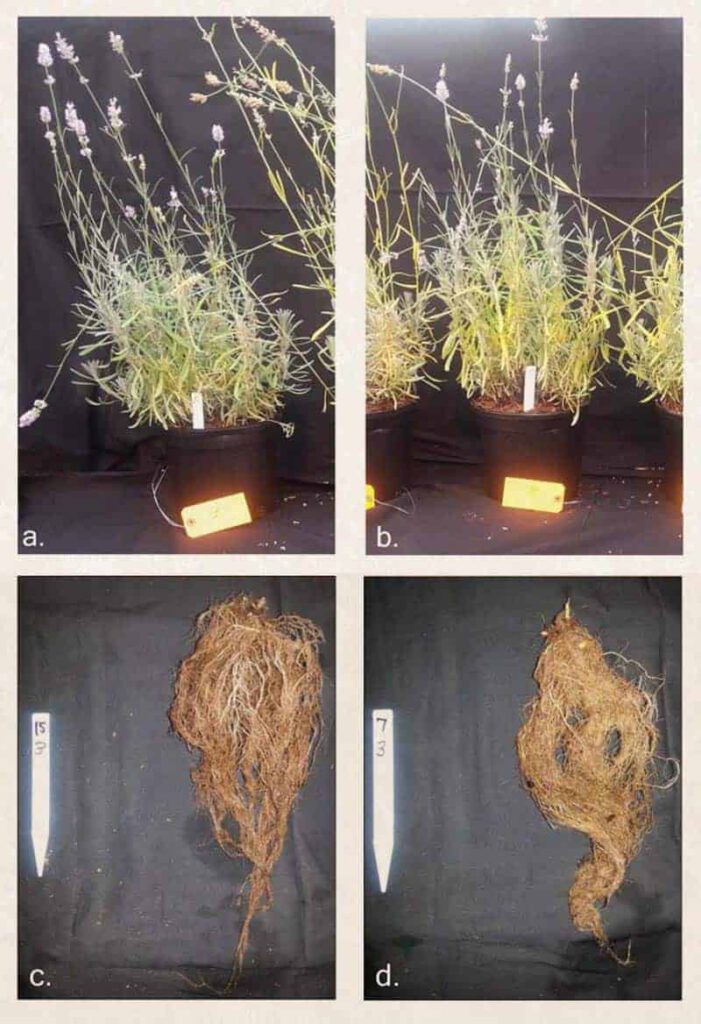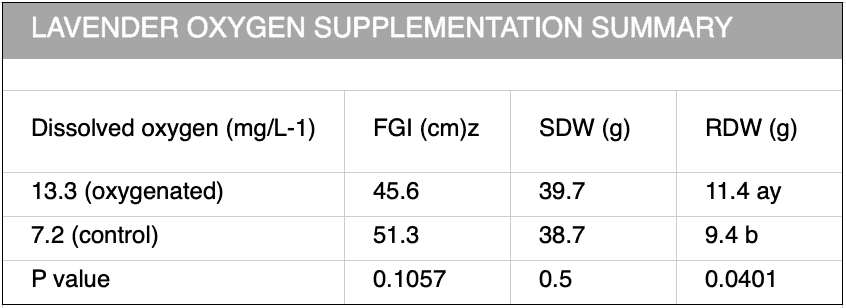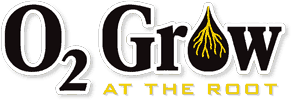Container-Grown Lavender
Affected by Oxygenated Irrigation Water
Department of Plant Sciences, University of Tennessee
Prepared by: S. Evan Wilson, Diana R. Cochran and Amy Fulcher
Introduction:

Materials and Methods
- Potted into 5″ azalea containers on 16 March 2012
- Topdressed with Osmocote 18N-2.6P-10K, 8 to 9 month CRF, 5 grams per container
- Transplanted from 5″ containers into classic 300 trade gallon containers on11 July 2012 and transplanted to 400 full gallon containers on 28 September 2012
- Two D.O. levels: control at 7.2 mg·L-1 & an elevated at 13.3 mg·L-1
- Irrigated every two days: 250 mL (5″ containers) and 500 mL (gallon containers) Data Collected
- Growth indices (average height + width1 + width2) ÷ 3 • Shoot dry weights (oven dried for 72h @ 60°C)
- Root dry weights (oven dried for 72h @ 60°C)
Lavender irrigated with 13.3 mg/L

(a.) or 7.2 mg/L: (b.), root dry weight was greater for lavender irrigated with 13.3 mg/L (c.) compared with plants irrigated with 7.2 mg/L (d.) dissolved oxygen.
Table 1:

Literature Cited
Kläring, H.-P. and M. Zude. 2009. Sensing of tomato plant response to hypoxia in the root environment. Scientia Hort.
122:17-25.
Drew, M.C. and J.M. Lynch. 1980. Soil anaerobiosis, microorganisms, and root function. Ann. Rev. Phytopathol. 18:37-66.
Marfà, O., R. Cáceres, and S. Guri. 2005. Oxyfertigation: A new technique for soilless culture under Mediterranean
conditions. Proc. IS on Soilless Cult. And Hydroponics. Acta Hort. 697.
Results & Discussion
There were no differences in growth indices or shoot biomass of lavender irrigated with elevated dissolved oxygen compared to lavender irrigated with the control level (Table 1). However, root biomass was 21% greater for lavender irrigated with elevated dissolved oxygen compared to plants irrigated with the control level. These results are similar to Marfà et al. (2005) who reported an increase in fine roots (less than 2 mm) of peppers grown in Rockwool irrigated with 16 ppm dissolved oxygen compared to their control level of 6 ppm. Based on our results, elevating the dissolved oxygen level of irrigation water can improve root growth of container grown lavender.
We acknowledge Andrea Menendez, Marisol Benitez-Ramirez, and Phil Flanagan for technical assistance and Kim Holden’s Nursery for supplying the water source.
